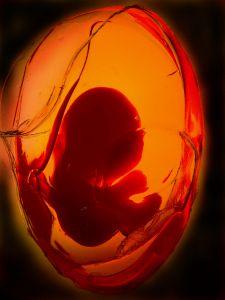You may have heard that it is better to have a baby at a young age to avoid certain birth defects. While this is somewhat true, a woman can have a healthy baby throughout her premenopausal life. The chance of having a baby with a birth defect does increase with age, but you need to know the facts before determining whether it is a substantial risk that you would want to avoid.
Potential
The number of women having babies later in life, between the ages of 35 and 44, has doubled from 1978 to the year 2000, according to the National Center for Health Statistics.
Causes
According to the Southern California Center for Reproductive Medicine, around 90 percent of a woman’s eggs are genetically abnormal by the time she is 40. This can lead to abnormal pregnancies and birth defects.
Types
Older women are more likely to have a baby born with a chromosomal birth defect, according to Dartmouth-Hitchcock Medical Center. One of the most common of these defects is Down syndrome. This condition is when a child is born with an extra copy of the 21st chromosome. Patau’s syndrome, a less common birth defect, is a condition in which there is an extra No. 13 chromosome. Edward’s syndrome is when the baby is born with and extra No. 18 chromosome. Babies that are born with Edward’s and Patau’s birth defects seldom survive.
Time Frame
According to the March of Dimes, at the age of 25, a woman has about a one-in-1,250 chance of having a baby with Down syndrome. As the woman ages, this statistic increases. For example, at 30 the chance becomes a one in 1,000. Then at 35, the chance of having a baby with Down syndrome jumps to 1 in 400, and then to one in 100 by 40. By the time the woman is 49, the chance of having a baby with and extra 21st chromosome is one in 10.
Detection
Older women are often encouraged during their pregnancy to take extra tests to determine if the baby will have birth defects. On such test is an ultrasound to determine the amount of fluid space at the back of the baby’s neck. Babies with Downs typically have more fluid space than a healthy baby. Amniocentesis and chorionic villus sampling may be done as well. Amniocentesis is done by injecting a needle into the amniotic fluid in the womb and removing some for testing. Chorionic villus sampling is done by taking a tissue sample from the sac around the fetus.





